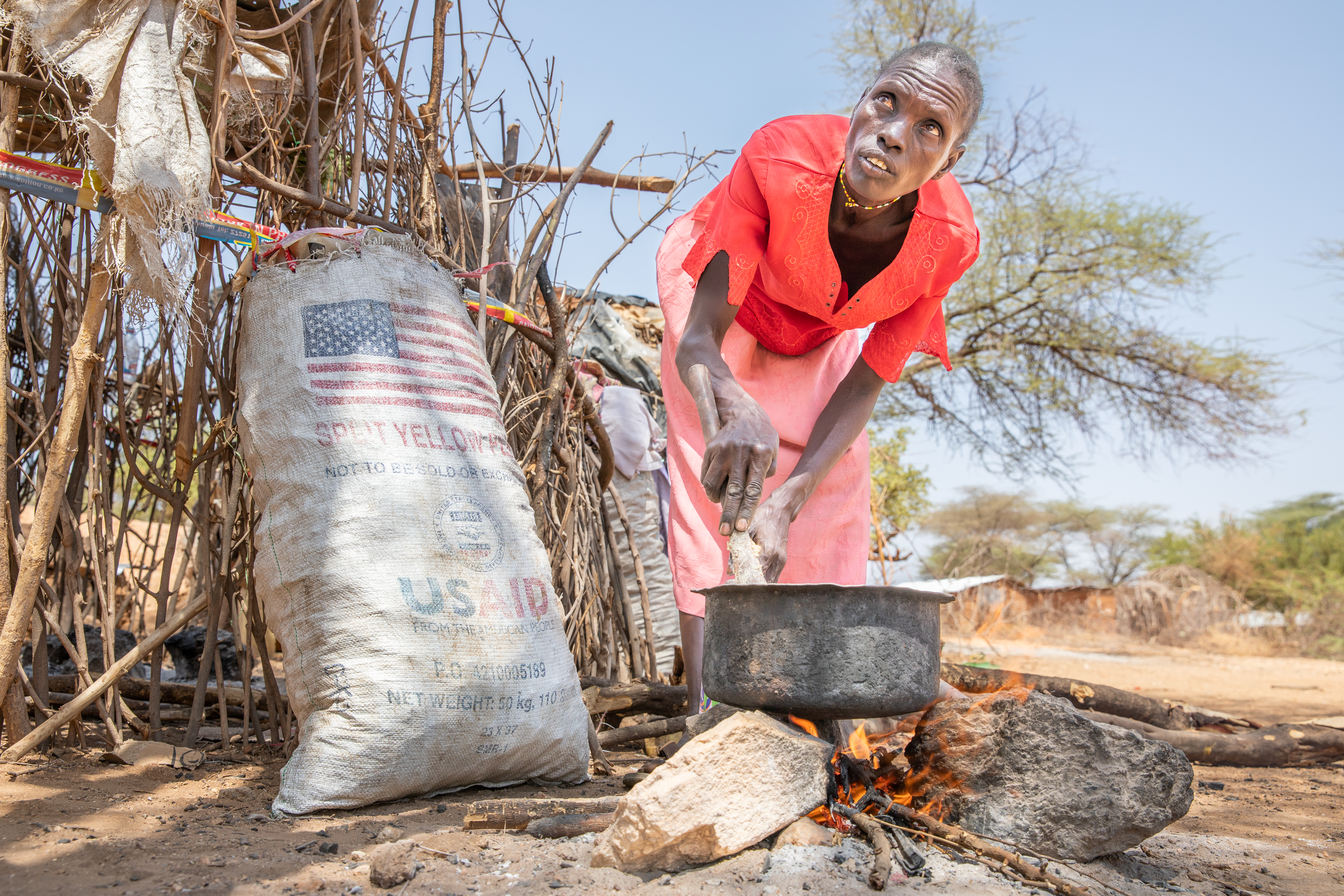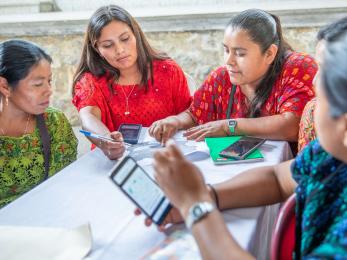The Libra opportunity for smallholder farmers

Can cryptocurrencies bring smallholder farmers into formal financial systems?
Unless you have been hiding under the proverbial digital rock, you might have heard that Mercy Corps is a founding member of the Libra Association. Libra is a new cryptocurrency structured as a quasi-blockchain framework and backed by a basket of stable currencies. The Libra Association is the governing body for the Libra currency and its supporting blockchain. Another name you should know is Calibra; the Libra digital wallet solution created by Facebook and integrated with Facebook Messenger and the WhatsApp platforms to enable peer-to-peer payments through those channels. You can find out more about how Libra works here, while other details (including where the trials will start and with which currencies) will follow the full service launch in 2020.
Since the Libra announcement in June 2019, much has been stipulated about Libra’s potential to disrupt financial systems and the regulatory gymnastics necessary to do so. While that discussion is ongoing and highly relevant for the viability of future use cases in the global context, this series of blogs will assume that the regulatory questions will be overcome, and policy frameworks will fall in line. Our focus, as somewhat of a cryptocurrency thought exercise, will be on the impact Libra could have for smallholder farmers found predominantly outside of formal financial systems.
The financial inclusion problems faced by smallholder farmers
When we at Mercy Corps AgriFin sit with telecommunications and financial institutions to evaluate and support their investments in agriculture, we often advise them to adopt rigorous human centered design principles as a first step — they should understand the often-unique challenges a smallholder farmer faces before deploying new products and services. Libra must also be viewed through this lens — what are the problems a cryptocurrency could solve for a smallholder farmer? In digital financial service circles, we can sometimes get carried away by the new shiny innovation without fully understanding the problem/s it intends to resolve. We know, for example, that Bitcoin played an important role (informally) to enable payments during the Zimbabwe hyperinflation years, yet never really took off in other developing contexts, arguably because the use case for cryptocurrencies was not fully integrated outside of hyperinflation or market speculator scenarios. Meanwhile, the rapid growth of mobile money in East Africa presents an important parallel for the potential of new monetary mechanisms.
To answer the question: How can blockchain and cryptocurrencies really impact the 500 million+ smallholder farmers around the world who are mostly excluded from formal financial systems? Let’s look at three examples: inflation, ownership, and payments and remittances.
Inflation
In many developing economies, local currency is expensive and risky for anything beyond a one-off transaction. Let’s consider this fact from the perspective of a smallholder. If you’re a Zambian maize farmer, you have one long growing season that last on average six — eight months. The annual inflation rate of Zambia this year (2019) is 10.5 percent. If this farmer had pre-financed the crop or planned their finances expecting prices to be similar to those of the previous season, the inflationary gap they are likely to experience would create losses and insolvency that would be felt first and hardest at the farm gate. And these losses are felt nationally, regionally and globally. A stable alternative currency for transactions could save significant financial losses that result from the inherent instability of developing economy currencies.
Ownership and formal visibility
At the root of the systematic exclusion of smallholder farmers is their invisibility in formal markets. They often sell, buy and borrow only through the informal channels accessible to them, but concealed to the financial system at large. Financial institutions generally cannot access the requisite farmer Know Your Customer data footprint (identity, collateral, transaction history), nor can they track credit or investments once they are made.
When formal market actors do reach these farmers, risks and transaction costs are high due to their remote locations and lack of data visibility — while for the farmer — interest rates, inflation and transactions costs diminish the profitability of their crops. Paradoxically, these same excluded farmers represent an untapped market potential of USD 200 billion (Initiative for Smallholder Finance, 2016).
Cryptocurrencies like Libra are based on a blockchain, which allows for unique identification per unit of value and a fully provable and traceable ownership history — thereby improving the visibility of the farmer once they transact using the currency. If these transactions are fully integrated within financial services to them, they are likely to improve their risk-profile for more affordable financial products and build a unique identity to enable future inclusion.
Transaction costs — payments and remittances
Even when a farmer is included in the financial system, either through digital or traditional banking means, transaction costs are high. Farmers often receive peer-to-peer remittances from family members based in urban centers or overseas, payments from offtakers across borders to their cooperative bank account, or payments direct from offtakers in the form of mobile money. Through these channels farmers can lose up to 8 percent due to cash out fees alone (CGAP). Agents and banks are often located 1–2 hours away from farmers’ locations, incurring additional transportation costs when they cash out. Due to the low volume of transactions, inefficiencies in regulatory systems, cost of moving cash and cost of money at the national scale, mobile network operators and banks are unable to offer lower transaction fees. This problem is often referred to collectively as “friction”, a word you will get to know in this series.
Once Libra becomes an accepted, user centric (mobile wallet-enabled) form of currency, the fees associated with peer-to-peer transactions should be significantly lower, while the need to instantly cash out to local currency will decrease as cryptocurrency becomes an acceptable payment mechanism within local economies.
Conclusion
While the use case for cryptocurrency for farmers must be tested over the seasons, it’s possible that, just like the mobile money revolution in East Africa, cryptocurrency could once again redefine what is possible for financial inclusion in agriculture by decreasing frictions, costs and barriers for deploying capital. In the next blog we will explore potential use cases in detail.


